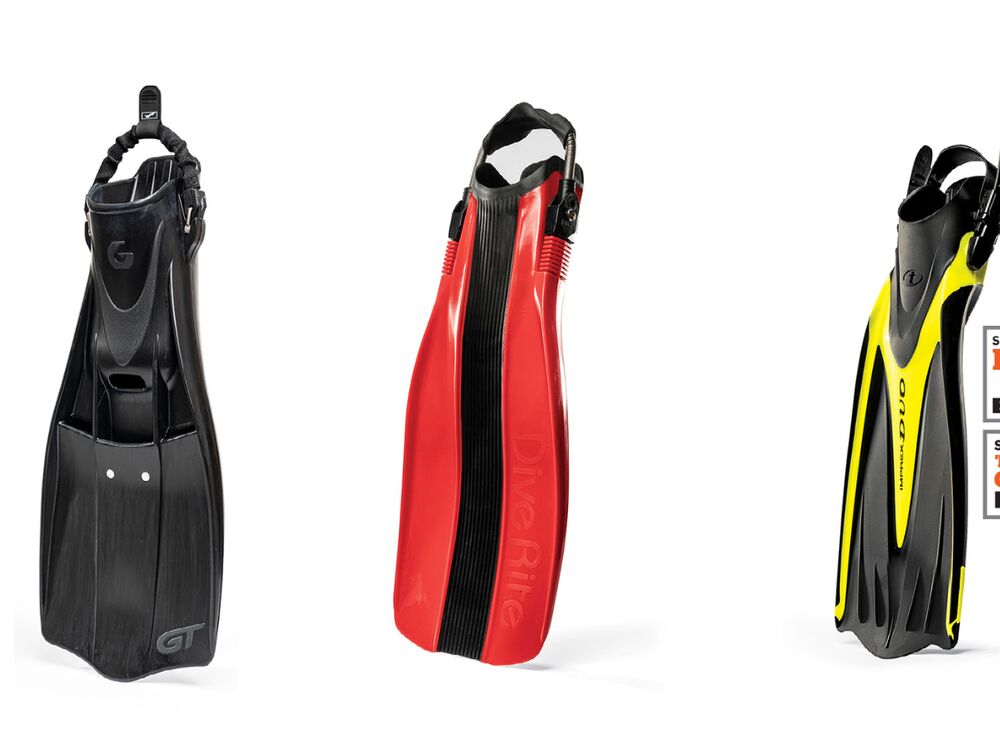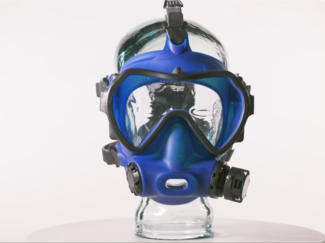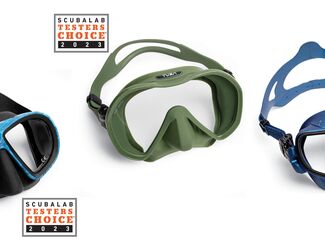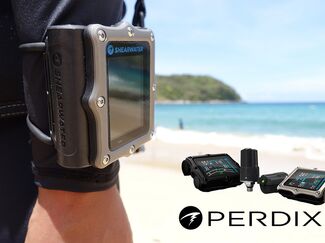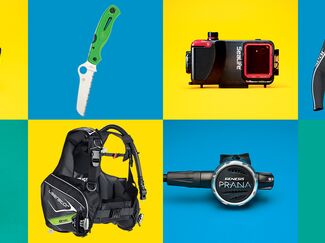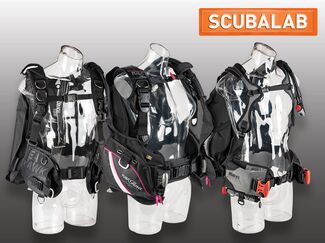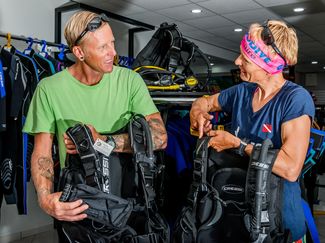Scuba Gear
Everything you need to know about scuba gear, all in one place.
Everything you need to know about scuba diving gear all in one place including buyer’s guides, head-to-head reviews and how-to guides.
SCUBA DIVING GEAR REVIEWS
Scuba Diving Masks
A scuba diving mask may seem like a basic piece of gear, but it’s critical that you find a dive mask that is comfortable and properly fitted. Your dive mask creates a pocket of air in front of your eyes and nose so you can see clearly underwater and equalize the pressure on your ears and sinuses as you go deeper. Scuba diving masks are among the first pieces of scuba gear that divers need to buy, and are their window to the underwater world.
Scuba BCDs (Buoyancy Compensators or Buoyancy Control Device)
Scuba BCDs are also called scuba BCs, buoyancy compensators or buoyancy control devices. But whatever you call it, know that this backpack-like device supports the weight of your tank above water, and its most important function is to help you control your position in the water column. By adding air to your scuba BCD’s internal bladder, you rise toward the surface; by venting air from it, you sink toward the bottom. There are various types of scuba BCDs, such as jacket-style, back-inflate, and back plate and wing, with each suiting scuba divers’ different preferences and diving styles.
Scuba Diving Regulators
Your scuba regulator lets you breathe underwater. It connects to your scuba tank, converting compressed air to breathable air when you inhale. An octopus is a backup regulator. It usually has a longer hose and a bright yellow body so it's easy to find and can be used by others in an emergency.
Diving Fins
Scuba diving fins translate your kicks into smooth, efficient movement through a medium that's 800 times denser than air. Full-foot fins go on your bare feet; open-heel or adjustable fins require that you wear neoprene booties for a proper fit. Scuba gear manufacturers develop different types of fins for different types of diving, including tec-diving fins that may be shorter and stiffer for controlled, powerful kicks, or freediving fins that are longer and more efficient.
Scuba Diving Wetsuits
Even warm water conducts heat away from your body 25 times faster than air.Scuba wetsuits provide insulation against this cooling effect. Form-fitting exposure suits are usually made of foam neoprene rubber (wetsuits) or spandex-like materials (skins), sometimes with a fleece lining. Scuba wetsuits allow a small layer of water inside, allowing your body to warm that water naturally and keep most of the water out.
Scuba Diving Drysuits
It’s pretty simple: scuba drysuits keep you dry. These exposure suits have special seals and zippers that keep the water out, allowing you to wear the appropriate amount of undergarments and stay warm while diving in cold-water locales.
LATEST SCUBA GEAR NEWS
Dive Computers
Dive computers display critical dive information in real time, helping you track information such as dive time, depth, temperature, no-deco time and more. Air-integrated dive computers allow you to track how much air is remaining in your scuba tank throughout the dive. There are several types of dive computers, including wrist-mount computers and console computers.
Dive Watches
Although not considered an essential piece of scuba diving gear, dive watches can be an indispensable tool underwater. Your dive watch is the only piece of gear you can wear 24/7 and and can be an invaluable backup option for keeping track of your dive time underwater. As long as your dive watch is water resistant to 200 meters, the watch will be dependable under all normal diving circumstances.
Scuba Diving Weights
Diving weights are used to balance buoyancy underwater and aid divers on their descent. Diving weights are made from lead and then coated by plastic to aid in corrosion. Diving weights can be added to a weight belt that is worn on top of a wetsuit and adjusted to your waist by scuba divers and freedivers. Diving weights can also be used with integrated-weight BC’s.
Dive Knives
A diving knife can help get you out of tricky situations underwater. Dive knives come in a variety of shapes, styles and sizes and it’s important to look for a dive knife that is water resistant with a sharp blade and secure grip.
Scuba Diving Lights
A good dive light makes many types of diving possible — from wreck penetration to night diving — and simply put, diving lights help keep you safe. Scuba diving lights come in all shapes and sizes, from a compact torch that can fit in your BC pocket to dive lights meant for lighting up an underwater cave. Choosing the right dive light is dependent on what type of diving you plan to do. There are even dive lights that come with a built-in camera and feature a spot light or a wide beam to use for filming video. Diving lights can be considered a piece of essential safety gear if you plan to dive in caves, at night or penetrate wrecks.

Diving Accessories
The right scuba diving accessory could save your life, like a GPS rescue device. Other scuba accessories can be used as a fun tool for communicating with your dive buddy, like an underwater slate or tank banger. Scuba diving accessories encompass a wide range of items, and can be anything from a surface signaling device (SMB) to a dry bag for keeping non-diving items dry while you’re underwater.
Underwater Cameras for Diving
Underwater cameras come in many forms, from point-and-shoot to action cameras and high-end DSLRs. There are compact underwater dive cameras and also large systems meant for shooting Hollywood productions. Finding the best underwater camera for scuba diving all depends on your experience level and what you plan to use your underwater dive camera for.
Snorkel Gear
A snorkel, mask and fins are essential pieces of gear for snorkelers and scuba divers. Snorkel gear is a must to begin any open-water certification course. Snorkels help divers save air when at the surface and act as a necessary piece of safety gear.

